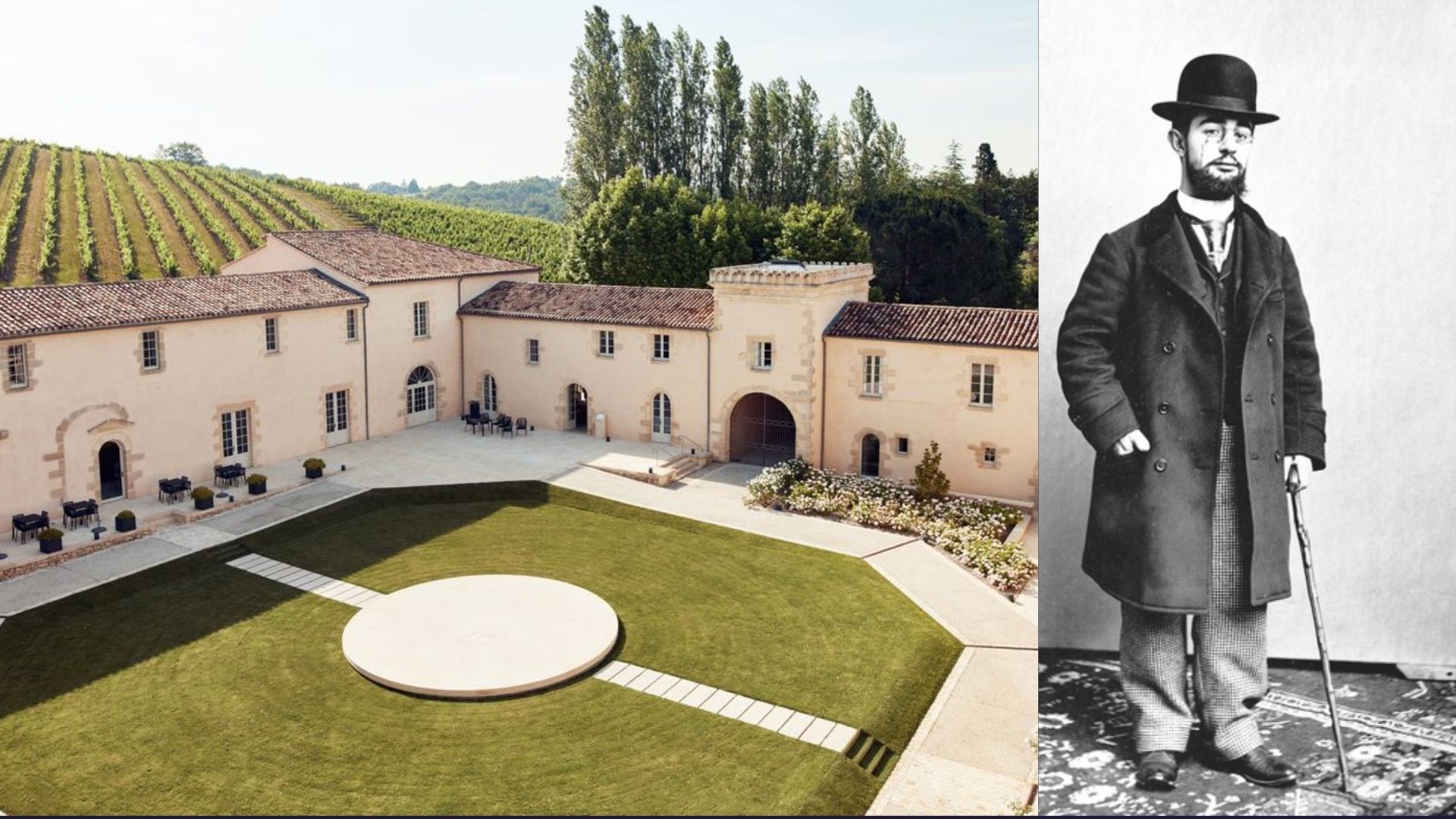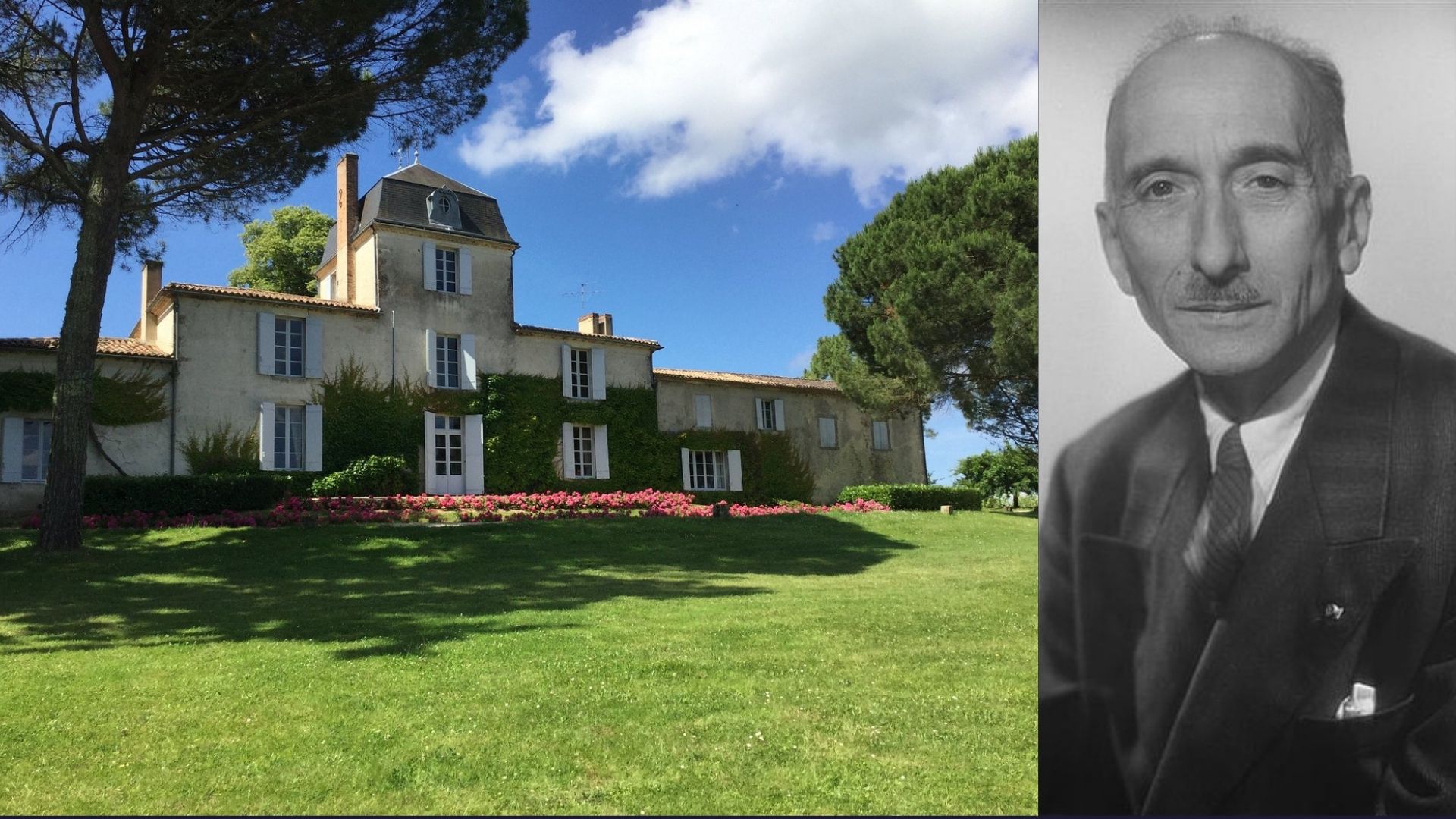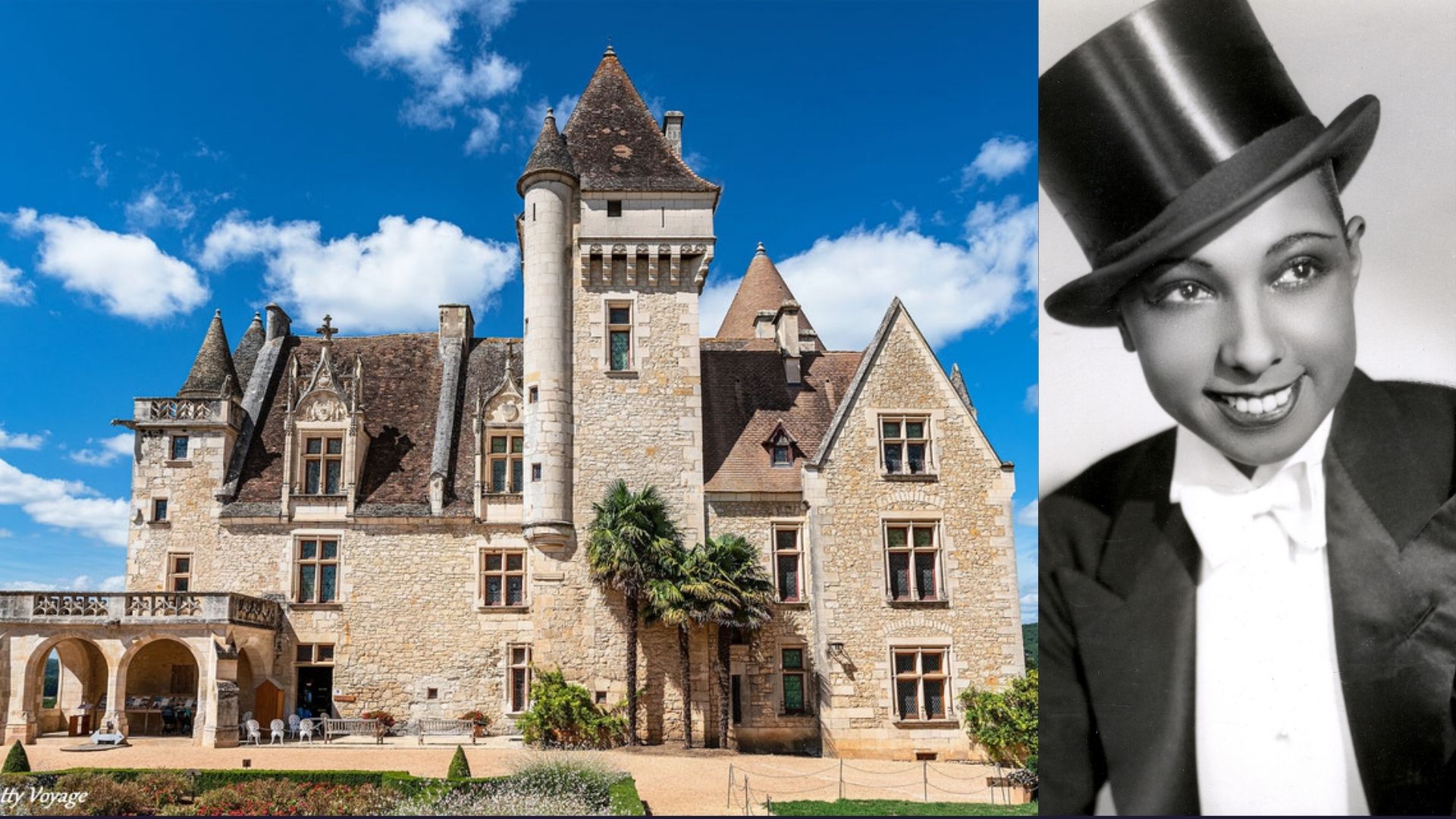Published the 04/08/2024 in Exploring the Region
Immerse yourself in the fascinating world of great French artists and be captivated by the profound connections they maintained with their iconic vineyards and residences. By exploring these unique connections, you will discover an overlooked aspect of their cultural and historical heritage. From writers to painters to iconic figures of the French art scene, their passions for wine and their attachment to their land prove to be key elements of their legacy.
.jpg)
Château de Montaigne - Michel de Montaigne
Michel Eyquem de Montaigne, known as Michel de Montaigne, remains an iconic figure of the French Renaissance. A humanist philosopher, moralist, and statesman, he is most famous for his writings, particularly the Essays, a groundbreaking work for his time.
Raised in the Château de Montaigne, located in the heart of the Montravel vineyard, Montaigne maintained an intimate relationship with wine. He owned vineyards and showed a huge interest in viticulture. While denouncing the harmful effects of drunkenness on health and the mind, Montaigne advocated for moderate consumption, focused on pleasure. He considered wine as a symbol of conviviality and sharing, evoking the idea of giving a kiss and receiving a caress in return.
Did you know that Montaigne had a true preference for Pinot Gris, which he considered one of his favorite wines? This preference illustrates his refinement and discernment in matters of wine.
.jpg)
Château de la Brède - Montesquieu
Born in 1689, Charles Louis de Secondat, better known as Montesquieu, an iconic figure of the Enlightenment, left an indelible mark on intellectual history. Beyond his major contributions as a jurist and writer, notably with his seminal work "The Spirit of the Laws". At the age of 24, he inherited the title of Baron of La Brède and decided to devote his time to managing the family castle and its vineyards to achieve financial independence.
Montesquieu was deeply rooted in the terroir of La Brède. His passion for wine was inseparable from his way of life. He embarked on an original approach to improve wine production in his region. To this end, he undertook a thorough study of local viticultural practices, compiling valuable information on the most suitable grape varieties, the best harvest times, and the most effective cultivation techniques. This "first wine dictionary" bears witness to his forward-thinking vision and commitment to the quality and authenticity of La Brède wines.
His travels allowed him to establish contacts and promote his wines abroad, notably in England, while remaining faithful to his land for the harvest. As an enlightened man, he ensured the integrity of his wines, opposing any artificial alteration, and generously shared his knowledge of food and wine pairings and tasting practices.
Thanks to his growing reputation, notably gained with the publication of the "Persian Letters" in 1721, Montesquieu became a prominent figure in Bordeaux viticulture. His Château de La Brède, a symbol of his attachment to his land and his viticultural heritage, remains today a place steeped in history, open to visits for wine and history enthusiasts.

Château Malromé - Henri de Toulouse Lautrec
Henri de Toulouse-Lautrec, the famous post-impressionist painter, left an immense artistic legacy. With 737 paintings, 275 watercolors, 369 lithographs, and over 5000 drawings, he made his mark on his era with his unique and innovative style.
Starting in 1883, Toulouse-Lautrec spent his summers at Château de Malromé in Gironde, acquired by his mother, Countess Adèle de Toulouse-Lautrec. With thirty-four hectares of vineyards, this estate was the artist's favorite place. He spent his childhood and adolescence there and returned regularly. It was there that he devoted himself to painting the grape harvest, immortalizing scenes of vineyard life.
Toulouse-Lautrec had a deep connection with wine, even bottling his own wine in Paris. His proximity to Château de Malromé was such that he breathed his last breath there in 1901.
Did you know that today, Château de Malromé has reopened its doors after ten years of closure? The museum, reconstructed in the style of the 19th century, exhibits reproductions of the artist's works as well as the salon of his mother, Adèle. In tribute to the latter, a great manager of the vineyard from 1883 to 1930, a restaurant bearing her name has been opened within the castle. The restaurant Adèle X Maison Darroze offers inventive and flavorful cuisine, perpetuating the tradition of excellence associated with the estate.
Château de Malromé was honored in 2016 with the label "maison des illustres" awarded by the Ministry of Culture, testifying to its importance in preserving the memory of significant figures in French history.

Château Malagar - François Mauriac
Born in Bordeaux in October 1885, François Mauriac left an indelible mark on the literary world as a writer and poet. Winner of the Nobel Prize in Literature in 1952 and a member of the Académie française, he is best known for his striking works that explore the depths of the human soul.
Château de Malagar François Mauriac had a special relationship with his vineyard, located in the heart of the Sauternes vineyards, in Verdelais, near Saint-Macaire. He attached great importance to each harvest, and his connection with wine is evident in his work, particularly in "La Chair et le Sang" (1920), where he sensitively addresses the world of winemaking. In 1921, with "Préséances," he portrays Bordeaux merchants acerbically, which marginalized him from Bordeaux society. Despite this, his attachment to his Malagar property remained unwavering.
In 1927, François Mauriac inherited the Malagar estate, a historically rich domain passed down since his great-grandfather. It was there that he found inspiration for the majority of his work. His youth in the countryside permeates his writings, where he depicts landscapes with as much passion as criticism towards landowners. Through his books like "Le Noeud de Vipères" (1932) and "Le Sagouin" (1951), Mauriac evokes life at Malagar, from the grape harvests to agricultural work, sometimes denouncing alcoholism.
In 1937, he began keeping a book of accounts for Malagar, recording events, work, and his reflections during his stays. Alongside his literary success, he was elected a member of the Académie française in 1933 and received the Nobel Prize in Literature in 1952.
Did you know that today, the Malagar estate in Saint-Maixant is open to the public? It hosts literary and artistic events while preserving the memory of François Mauriac. The 18th-century cellar, built by the Celestine monks, now houses an exhibition hall dedicated to the writer within the François-Mauriac center.

Château des Milandres - Josephine Baker
Born on June 3, 1906, in Saint Louis, Missouri, United States of America, Joséphine Baker embodies courage and determination in her fight against racism and for freedom. Passionate about dance from a young age, she quickly climbed the ranks to become one of the most iconic artists of the 20th century.
During World War II, Joséphine Baker actively engaged in the French resistance. She used her status as a renowned artist to gather information and transmit coded messages on behalf of the French secret services. Her contribution to the fight against Nazi occupation was remarkable, and she received honors for her courage and dedication to France.
Classified as a historical monument and labeled "House of the Illustrious" in 2012, it testifies to the exceptional legacy of Joséphine Baker. Located in Castelnaud-la-Chapelle, in the Dordogne region, this estate was the home of the legendary music-hall artist.
Joséphine Baker had an idealistic vision for Les Milandes, a vision that is perpetuated today by the new owner, Angélique de Saint-Exupéry. In 1947, Joséphine acquired this property and turned it into a refuge for her "rainbow tribe," composed of the twelve children she had adopted. But Les Milandes under Joséphine were much more than just a residence. She owned 300 hectares of land and a huge farm, and had transformed the place into an amusement park with indoor and outdoor stages for her artistic performances. This park welcomed hundreds of thousands of visitors and helped launch tourism in the region. Joséphine also developed several restaurants, a luxury hotel, a gas station, a bakery, and even organized school transportation for her children.
Her commitment to Les Milandes was total. She modernized the property by installing electricity, running water, and central heating, and employed over a hundred people to maintain her estate in perfect condition. Despite her generosity, Joséphine was often exploited, but her legacy through Les Milandes remains a testament to her greatness and impact in the region.
Did you know that the amusement park at Les Milandes was also a venue for many renowned artists, such as Jacques Brel, Dalida, and Luis Mariano, who contributed to the cultural development of the estate?

Villa Arnaga - Edmond Rostand
Born in 1868, Edmond Rostand remains famous for his major work, Cyrano de Bergerac. A renowned writer and playwright, he left a lasting mark on the French literary scene with his talent and boundless imagination.
Located in Cambo-les-Bains, it is an iconic place imbued with the spirit of Edmond Rostand. Even before becoming a museum, Villa Arnaga was the fruit of this illustrious author's dream. In a green setting, Rostand created the house of his dreams, blending traditional Neo-Basque architecture with a sumptuous interior, like a theater set.
Built in a record time of three years (1903-1906), Villa Arnaga offers all the modern comforts of the time, including hot water, electricity, heating, and even a telephone. It was in this idyllic setting that the playwright lived with his family, including the poet Rosemonde Gérard and their children Maurice and Jean Rostand.
After Edmond Rostand's death in 1918, the villa was sold in 1922 before becoming the property of the municipality of Cambo-les-Bains in 1962. Today, Villa Arnaga continues to captivate visitors with the beauty of its gardens and the unique atmosphere that reigns within the house, perpetuating the artistic and literary heritage of its illustrious creator.
If you're eager to explore these historic castles and mansions, our receptive agency located in Bordeaux, is at your service to organize tailor-made guided tours. Immerse yourself in the enchanting universe of these iconic places, soak up their unique atmosphere, and discover the fascinating stories that surround them.
Contact us today to plan your next excursion to discover the French cultural heritage.
Want to discover Bordeaux and its region?